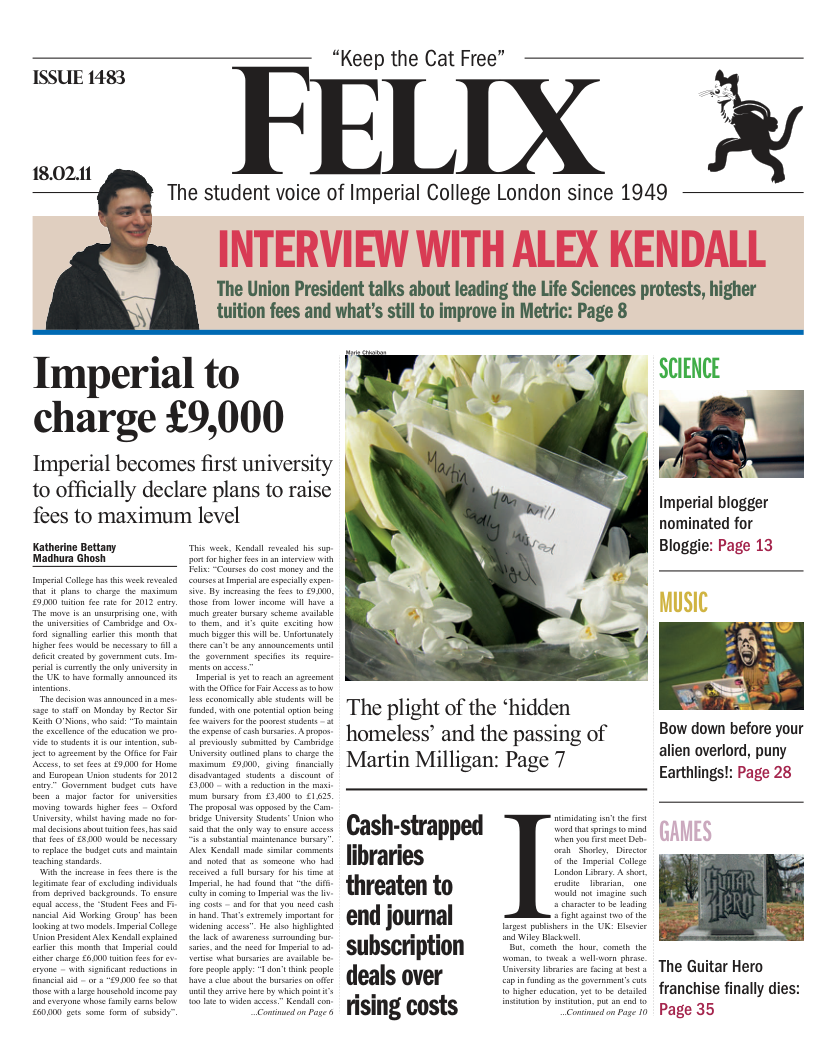Tragic tourism perils
Priya Garg contemplates the naural beauty of Foz do Iguaçu, and its fragility at the hands of mass tourism.

After many buses and a short internal flight, we hauled ourselves and our somehow heavier backpacks to the small town of Foz do Iguaçu, the closest resting point in Brazil en route to the famous Iguaçu Falls of the dramatic ‘terra de cataratas’ (land of the waterfalls). The Iguaçu Falls are formed by several spectacular drops of the Iguaçu River culminating in an 82 metre plummet termed ‘Devil’s Throat’, a glorious junction uniting Brazil, Paraguay and Argentina. Hearsay declares that in awe of this thundering vision Eleanor Roosevelt apparently exclaimed “poor Niagra!”
Carrying huge expectations, our first impression of Foz do Iguaçu was of a greasy dirty strip stifled by fast food joints; burgers, hotdogs, fries, sushi, chinese, supermercados, supermoffatos and pizza, interspersed within a riot of Las Vegas-style coloured lighting. Disappointed, we took an early night.
In the morning before visiting the waterfalls, we were convinced by a travelling Irish couple to join them in slipping over the border in a rickety local bus to Paraguay until midday to visit an electrical goods market. Imagine streets chock-a-block with stalls simmering with the sounds of hustlers selling knock-off brands, perfumes, tyres, shoes, laptops, chargers, mobile phone covers, rubbery crocs, hairpins and rows of fake aviators. There was red dust, chattering, honking cars, people dragging large plastic bags, hawkers and con artists everywhere amidst unfinished buildings and Paraguayans hanging off flimsy tiers of wooden scaffolding. Without purchasing, we escaped back to Brazil and went to the Iguaçu National Park.
A plush air conditioned tourist bus took us up through bushy green wilderness where rich red and golden butterflies fluttered by the windows, as the bus whipped over-exuberant branches of forestry. The layout of the National Park allows one to wander down paved walkways beside, take glass elevators above, lean on metal posts over and even boat across the surface of the fantastic waterfalls. Having watched the infamous ‘Gap Yah’ video, this was truly a place where I expected to feel the “awesome power of nature and the insignificance of man”, however we found ourselves curiously disappointed.
Yes, the waterfalls are indeed devastatingly beautiful. Imagine a whole panorama of black rock before you, with water gushing furiously from every angle, crashing, falling, pouring and pounding to churn foamy waves in pools below. First you see one stupendous stream of a waterfall surging 64 metres downward, then a whole circular basin of waterfalls until you finally arrive at Devil´s Throat in its extravagant width, the crowning glory of the Iguaçu River. Birds fly ahead, trees sway behind, and you are hit by the magnificence of what lies before you. What spoils it, ironically, is you being there in the first place.
As we peered over sweaty heads, fighting to line up our cameras at each viewpoint, we felt a growing envy of the first explorers to expose this sight. We imagined them, hacking for days through dense backwoods, picking at the edges of this spectacle until falling back in astonishment of the majesty of this wondrous sight. There they could revel alone in solitude and peace.
Now, in the searing heat, it was a noisy, busy commercial centre where after paying a hefty ticket fee you can duck past children flicking water, elbow tourists meandering over cement walkways, stumble over recycling bins and saunter past overpriced cafés on your trip around the waterfalls.
How can a waterfall be owned? What makes it an attraction to be paid for like a fairground ride? The destruction of nature by commercialism in man comes at a cost, and as tourists we felt a sudden hypocritical surge of sadness in being the ones adding to it, stamping our industrial marks all over the ancient wonders of the world.









